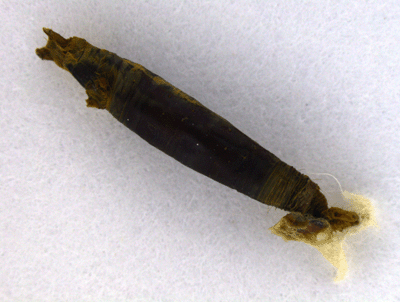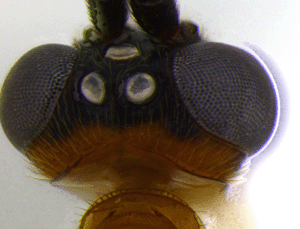LIFE HISTORY
DATA
|
Diagnostic features of
adults
|
Body length 6.1 mm; antenna with 42 flagellomeres; head
with vertex black, occiput light orangish brown; ocelli
large, ocell-ocular distance less than width of lateral
ocellus; occipital carina broken at vertex; mesosoma mostly
light orangish brown, except propodeum black; wings slightly
darkened; mesopleuron granulate; apex of hind tibia with
setae normal, not flattened; propodeum granulate-rugose,
with median propodeal carina absent; tarsal claw simple;
metasomal terga entirely black; metasomal tergum 3 costate
on anterior 2/3, median carina incomplete; ovipositor short,
about 0.25 x length of hind basitarsus.
|
Biology and rearing
records
|
Aleiodes aclydis has been reared from the
mummified caterpillar of an unidentified Geometridae found
on Ocotea (Lauraceae). It is a solitary koinobiont
endoparasitoid.
|
Distribution
|
This species is known only from the holotype specimen,
which was collected at Isla de las Palmas, Napo Province,
Ecuador, at 1883 meters elevation.
|
Similar species
|
Aleiodes aclydis is similar to Aleiodes
speciosus (Townsend), which also has large ocelli, but
A. aclydis can be distinguished by its lacking a
median carina on the propodeum. Other characteristics
separating these two species are given by Townsend and Shaw
(2009).
|
Comments
|
The species name aclydis means "small javelin" or "spear"
in Latin, referring to the short, sharp ovipositor of this
species.
|
Reference
|
Townsend, A. and S.R. Shaw. 2009. Nine new species of
Aleiodes reared from caterpillars in the northeastern
Andes of Ecuador (Hymenoptera: Braconidae: Rogadinae).
Journal of Insect Science 9, Article 33, pages 1-21.
Available online: insectscience.org/9.33
|



